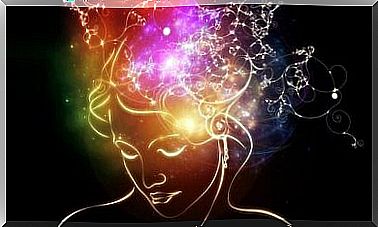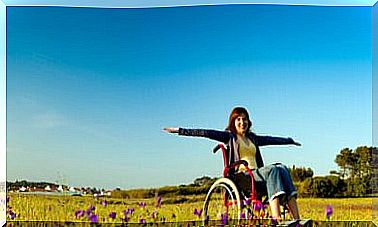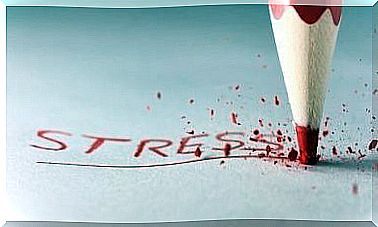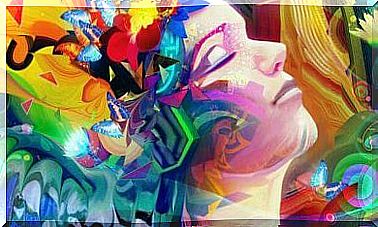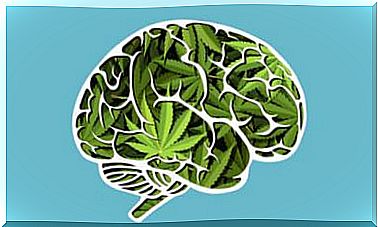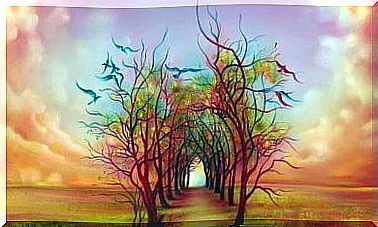Extracorporeal Experiences: What Are They?
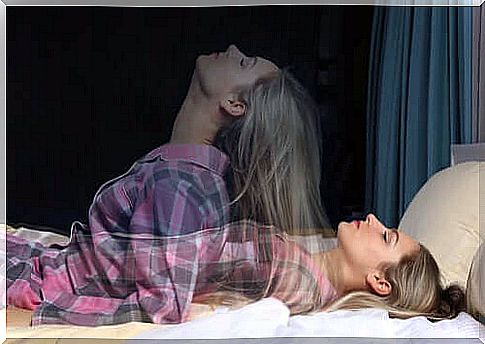
Extracorporeal experiences encompass a conglomeration of phenomena as fantastic as they are complex. Imagine seeing your body from the outside. O have the sensation of floating. These are some of the sensations that make up the phenomenon. But for a long time the explanations were tribal and mystical, today we know that the cause is in our brain.
Extracorporeal experiences are phenomena of perception that include experiences of illusory movements. Among them we can highlight: fly, fall, float and see yourself from the outside. These dissociative experiences are linked to neurological and psychological factors. They occur both in healthy subjects and in subjects with certain pathologies.
Types of extracorporeal experiences
We can divide the phenomenon into two types of experience, with well-defined characteristics:
- Sensory experiences : sensations of falling or floating represent a break in the union of bodily sensations involving the vestibulo-motor system
- Autoscopic experiences : these experiences consist of perceiving your own body from the outside

How do extracorporeal experiences happen?
Extracorporeal experiences are often associated with altered states of consciousness. Many authors compare the phenomenon to the characteristic states of dreams, with a great deal of imagination. In addition, it is an abnormal multisensory integration process in which the subject is aware of the situation. Therefore, the vestibular, motor and sensory systems are fundamental for its gestation.
Systems involved in the phenomenon
- Vestibular : This system has receptors in the inner ear which are responsible for maintaining a stable image in the retina. It is a fundamental ability to maintain balance
- Motor : During experiences, even if they do not physically occur, the brain performs the corresponding movement programs on a dissociative level
- Sensory : like the motor, it is located in the parietal lobe. Many authors support the theory that what is really projected is the image we have of the body.
Disorders and phenomena related to extracorporeal experiences
When one or the other of these systems is modified, the predisposition to an extracorporeal experience is greater. Disorders related to sleep, drug use and brain damage can create optimal conditions for these phenomena.
Among the phenomena associated with sleep, we can highlight:
- Hypnagogic and hypnopompic hallucinations : these are vivid and confused perceptual experiences that occur at the start and end of sleep
- Sleep paralysis : Desynchronization between the extremities and the running motor alters the multisensory processing of the body and, consequently, the perception of self, causing floating sensations or extracorporeal experiences
- Lucid dreams : they consist of the recovery of consciousness during sleep. The subject is able to partially realize a dream that presents itself with very clear characteristics and very precise details
- Rapid eye movement : Dreams occur at this stage of sleep. Indeed, the brain is then very active (similar to the waking state). Through electrophysiological studies, it was found that the three previous situations occurred during this phase of sleep.
Is it possible to induce an extracorporeal experience?
For centuries, these experiences have been linked to the paranormal. Nothing strange about that because our ancestors did not have the tools to study them. Today, we know that this phenomenon is explained by a distortion of the body image. There, cognitive processes such as memory, self-perception and imagination come into play.
Extracorporeal experiences and imagination
Just as this experience has an organic basis, there are also psychological factors closely related to the phenomenon and the most important is the personality. Several studies have shown that these experiences are more common in subjects with a high degree of imagination and openness to the experience. This relationship shows that experiences can also be enhanced by suggestion and personality characteristics.
Artificial induction
The phenomenon can also be induced artificially, which is one of the major proofs of its cause in the brain. The most effective techniques are:
- Induction of brain frequencies : through binaural beats, it is possible to induce in the brain a theta wave activity (4 – 7.5 Hz), characteristic of states between sleep and wakefulness
- Transcranial magnetic stimulation : by stimulation of the temporal lobes, as in the Persinger experiment. The hyper-connectivity generated between the lobes causes an intrusion of the spatial sense of “me” (right hemisphere) into the linguistic sense of “me” (left hemisphere)
- Direct stimulation : in some experiments it was possible to promote these experiences by direct stimulation of the vestibular and motor cortex
- Electrical stimulation of the temporo-parietal union: as in Arzy’s experience, the stimulation of this area of great multisensory processing causes errors in self-perception
- Sensory deprivation : by eliminating references to space and time, disorientation can lead to altered states of consciousness where mental images take on excessive realism
Extracorporeal experiences and meditation
This phenomenon usually occurs in states where brain activity is similar to that of sleep. But where the subject retains his consciousness. It has been found that those who meditate regularly can more easily access these experiences, which some call “astral travel”. Therefore, theta waves tend to proliferate in extreme states of relaxation such as meditation.

The participation of mirror neurons
Authors Jalalal and Ramachandran propose that the mirror neural system is so connected that it allows third-person virtual vision. Mirror neurons are triggered simply by seeing another person perform an action, connecting with higher centers to anticipate or symbolically imitate them. The connection of these neurons with the cerebral cortex and the afferent pathways would allow them to “separate from the body” under conditions of sensory alteration.
A psychobiological phenomenon
Extracorporeal experiences involve the nervous and motor systems, cognitive functions, and personality traits. It is also a phenomenon which, although natural under certain conditions, can also be pathological.
Therefore, inducing these experiences is not necessarily healthy and can be dangerous as they are also associated with psychotic attacks.
Since this is a phenomenon associated with the paranormal, people have long refused to see a specialist. They were indeed afraid that they would be called crazy. Understanding the real causes of the phenomenon is an important first step in treating it correctly.

